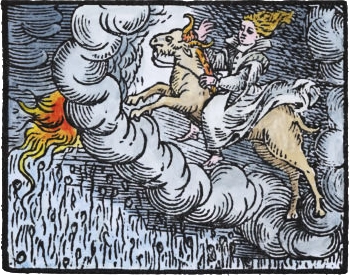Labyrinths & Mazes

Labyrinths & Mazes The Lore of the Labyrinth
What we call the beginning is often the end,
and to make an end is to make a beginning.
the end is where we start from.— T. S. Eliot
Folklore and mythology surrounding the labyrinth and the maze have been with us since before Ariadne first gave Theseus the clew of red thread, that helped initiate his passage to the center of the one from Cretan lore in order to slay the Minotaur. Our first task is to differentiate between an actual labyrinth and a maze, more notably a hedge type maze. Most labyrinths are unicursal, meaning that they have one trajectory or path that is navigated to the center where the prize or goal awaits. By following the crooked path of the labyrinth, with the many winding circuits, a person is eventually led into the very heart or omphalos to discover what it is that awaits there. In traditional children’s games from the British Isles, what waited at the center was usually a young girl or woman and this innocent symbolism reflects a much deeper theme when looked at in a broader sense, as by following the path of the labyrinth we are acting out in a physical sense the continuous rites of birth, death and rebirth.
The female figure at the center then becomes the Goddess of the Underworld, who is bestowing the gift of rebirth upon us after our long passage (a lifetime), to where she awaits with her gift of a long draught from the cauldron of rebirth, or a veritable magical sip from the deep well of word. Additional alternative symbolism reveals that often the figure at the center was also known to be cognate with the sun, and that by traveling the circuits of the labyrinth an ancient seasonal pattern was revealed as winter gave way into spring. And there are some labyrinths that have at the center axis a tree (in the guise of the world tree) rather than a female figure. Hedge-mazes on the other hand are often much more complex constructions that weave more than just to and fro, leading the wanderer into absolute dead-ends at times with no where to turn except back again to find the path that leads through and beyond.
Folk magic records give us other information on the use of labyrinths built near seaports that were designed to trap and capture the wind magically. Long before the advent of mechanical means, sailors erected such stone type labyrinths in order to catch favoring winds by which to steer ships, this was when which to travel people depended mainly upon the power of the wind. They also used these types of labyrinths to rid themselves of bad luck, as it was thought that if the sailors and fishermen were able to successfully navigate through the labyrinth without faltering and then were able to race back to their ship that would be able to trap the gremlins thought responsible for such things as a poor catch, bad storms and more.
The simple pattern of the labyrinth also makes it beneficial for such things as binding magic. Often labyrinthine patterns were found to have been artfully designed in the interlacing patterns on the shields of Celtic warriors. These designs known as the Luaithrindi were thought to be instrumental in the magical protection of the warrior on the battlefield as well as off. The hero Cuchulainn was known to have had such a type of shield. Swedish shepherds too used the binding power of the labyrinth to keep such foes as wolves away and to aid in such mundane tasks as that of protecting reindeer.
The number of circuits in the traditional labyrinth has related esoteric symbolism too. Seven is the usual number of complete circuits, and Western tradition reveals a wide variety of attachments and associations in regard to this lucky number. To note just a few, there are seven stages in the alchemical process, there are seven musical tones that are sacred to the god Pan, pre-Copernican cosmology gives us seven spheres or planets above the earth, we also recognize seven being the days of the week and according to Dante, there were seven levels that needed to be navigated in order to reach the Underworld or Inferno. The Preiddeu Annwn also gives us the seven castles and this Welsh lore reminds us of the seven companions of Arthur who returned from their sojourn to Annwn, “Except seven, none returned from Caer Sidi”. This mythology obliquely refers to the seven levels of initiation and consciousness that one must acquire in order to become an Ollamh (Master Bard).
There is a wealth of additional folklore and mythology that can be found about the labyrinth and the maze both online and off. Nigel Pennick’s book Mazes and Labyrinths, (which is the source of most of this essay) can be found easily enough through Amazon and other booksellers. For more information online, such as the different categories that labyrinth patterns fall into (classical labyrinths, roman labyrinths, medieval labyrinths and contemporary labyrinths), please visit the Caerdroia and Labyrinthos websites.
Above all, please take the time to enjoy your own walking of the crooked path that meanders here and back again!
Sources: Mazes & Labyrinths, Nigel Pennick

